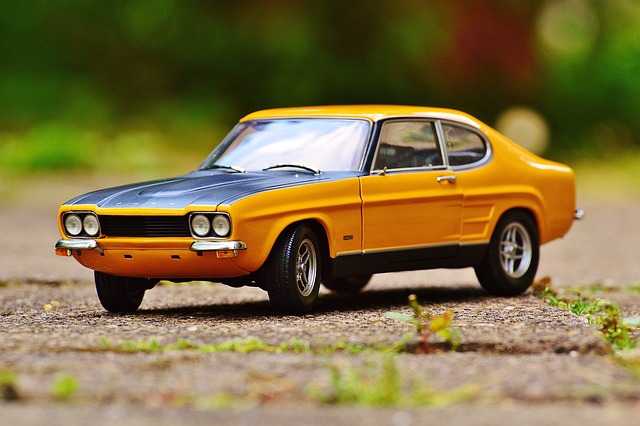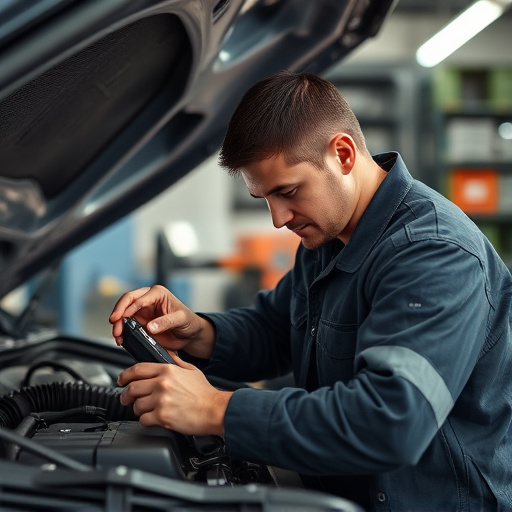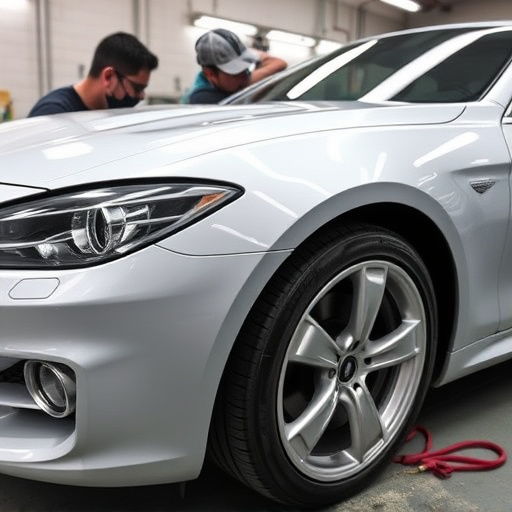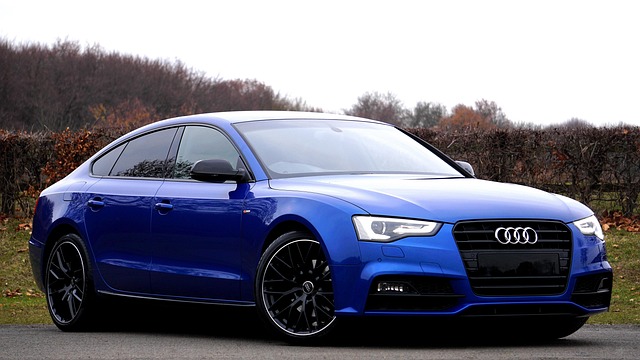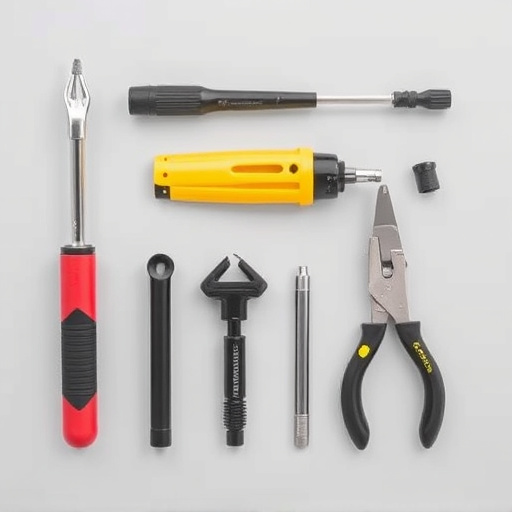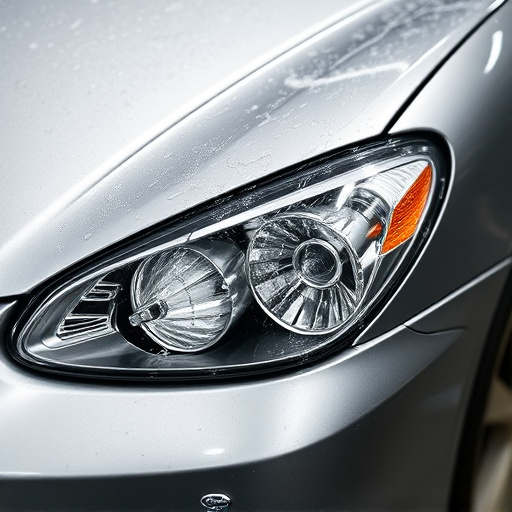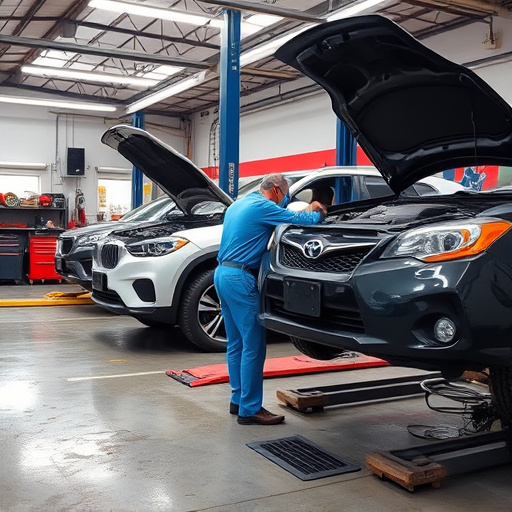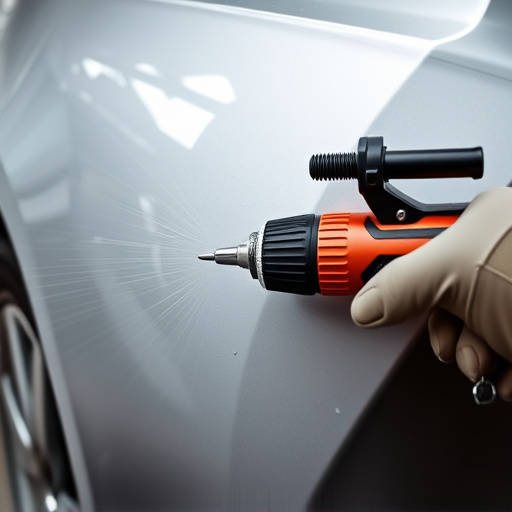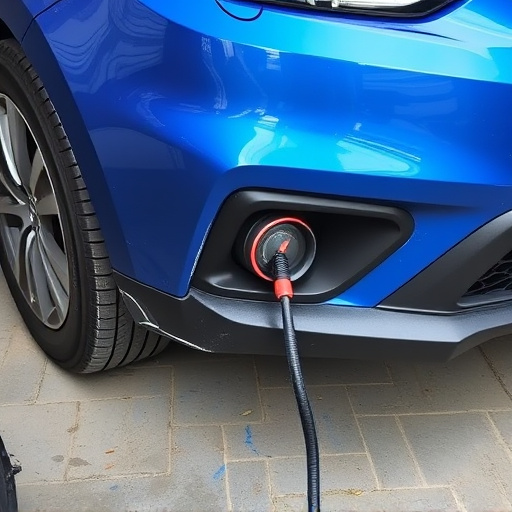Tesla performance calibration is a specialized service crucial for optimizing post-collision vehicle performance, focusing on fine-tuning advanced driver-assistance systems (ADAS) and hardware like airbags and Autopilot. Using advanced software diagnostics and state-of-the-art equipment, skilled technicians ensure vehicles return to pre-accident condition, enhancing safety and peace of mind. This meticulous process starts with an extensive inspection and adjustment of critical parameters such as engine performance, transmission settings, and suspension dynamics, ensuring Teslas maintain their exceptional handling and acceleration after repairs.
In the event of a collision, Tesla vehicles offer advanced safety features that require proper post-collision vehicle recovery. One critical aspect is understanding and executing precise Tesla performance calibration. This process ensures optimal functionality after a crash, enhancing safety and reducing downtime. By employing cutting-edge technology, technicians can calibrate key systems like acceleration and braking, mimicking pre-accident performance. This article explores the significance of Tesla performance calibration and provides a step-by-step guide to ensure thorough post-collision recovery.
- Understanding Tesla Performance Calibration After a Collision
- The Role of Advanced Technology in Post-Collision Vehicle Recovery
- Step-by-Step Process for Optimal Tesla Performance Calibration
Understanding Tesla Performance Calibration After a Collision

After a collision, Tesla vehicles require specialized care to ensure they’re safely and effectively calibrated for optimal performance. Tesla performance calibration is a process that fine-tunes various systems within the vehicle to compensate for any adjustments made during repairs. This is crucial as it guarantees the vehicle’s advanced driver-assistance systems (ADAS) function accurately, enhancing safety on the road.
For instance, a mercedes benz repair or auto bodywork service focusing on Tesla vehicles must pay meticulous attention to calibrating sensors and software components like the Advanced Airbag System, Autopilot functionality, and Crash Detection. Proficient technicians use specialized tools to perform these calibrations, ensuring that the vehicle operates as intended both in normal driving conditions and emergency scenarios. Skilled mechanics who specialize in these repairs can effectively address issues arising from vehicle dent repair while maintaining the integrity of Tesla’s innovative performance calibration systems.
The Role of Advanced Technology in Post-Collision Vehicle Recovery

In today’s digital era, Tesla performance calibration has emerged as a game-changer in post-collision vehicle recovery. Advanced technology plays a pivotal role in enhancing the precision and efficiency of collision repair processes. Specifically, calibration tools and techniques enable expert technicians to tweak various parameters within a car’s system, ensuring optimal performance after repairs. This includes intricate adjustments to sensors, actuators, and control modules, addressing issues that might have been caused by minor but critical damage during an accident.
The integration of advanced technology in collision repair goes beyond mere Tesla performance calibration. It involves sophisticated software diagnostics, precision instrument readings, and state-of-the-art equipment that facilitate accurate assessments and meticulous repairs. These innovations not only expedite the car bodywork restoration process but also ensure that every component, from the frame to intricate electrical systems, functions seamlessly. As a result, vehicles return to their pre-collision condition, providing peace of mind for owners while also contributing to overall safety on the road.
Step-by-Step Process for Optimal Tesla Performance Calibration

The process of Tesla performance calibration for post-collision recovery is a meticulous art that involves several steps to ensure optimal vehicle condition. It begins with a thorough inspection of the car, identifying any damage, especially in the auto bodywork, including fender repair if necessary. This initial assessment is crucial as it guides the subsequent calibration techniques.
Next, advanced diagnostic tools are employed to scan the vehicle’s system, pinpointing areas that require adjustment. Calibration specialists then carefully tweak various parameters, focusing on engine performance, transmission settings, and suspension dynamics. Each adjustment is data-driven, aiming to restore the car’s pre-collision handling and acceleration capabilities. This meticulous process ensures that even after damage repair (fender repair or broader auto bodywork repairs), the Tesla retains its exceptional performance characteristics.
In conclusion, Tesla performance calibration plays a pivotal role in post-collision vehicle recovery. By understanding the dynamics of this process and leveraging advanced technology, we can significantly enhance safety and effectiveness. Following a step-by-step approach ensures optimal results, allowing for precise adjustments and restored performance, thereby enriching both driver experience and overall vehicle longevity.
